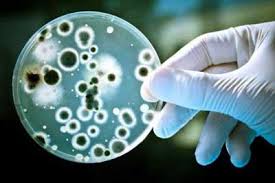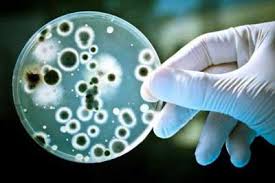
From the first discovery of bacteria which took place about “340 years ago” until recent times, scientists have been perplexed as to how these microscopic creatures manoeuvre their ways, like humans do they also own some kind of visual sense.
In a collaborative effort of the German and the British scientists, the team announced that they seem to have an answer to the above mentioned subject. According to these researchers, the visual capacity of the bacteria is more or less similar to human beings. As per their paper published in the eLife Journal, the cells of bacteria act like “a microscopic eyeball or the world's oldest and smallest camera eye”. While, the lead researcher, Conrad Mullineaux, who is the Queen Mary University of London’s Microbiology professor, adds:
"The idea that bacteria can see their world in basically the same way that we do is pretty exciting”.
The research team chose Cyanobacteria’s Synechocystis specie as their proto-type sample as they are usually found in water bodies wherein they create a “slippery green film”. Moreover, they can also be seen in pebbles and rocks. The Cyanobacteria came around 2.7 billion years ago” in the rung of evolution. These bacteria are autotrophs.
According to earlier studies conducted on these bacteria, it is found that these creatures “contain photosensors”, whereby they detect a source of light and displace themselves towards it; this phenomenon is known as phototaxis.
Interestingly, the current study finds out that Cyanobacteria perform phototaxis by using their body “like a lens”. Light hitting the bacteria’s “spherical surface”, leads it refract into a point on the other side of the cell”, in the process triggering a cellular movement that takes it “away from the focused spot”.
Following this phenomenon, the bacteria develop “tiny tentacle-like structures called pili” which move towards the source of light. The bacteria attach themselves to a surface, therefore in order to move these pili “retract and pull the bacteria along”. While Mullineaux adds:
"The fact that bacteria respond to light is one of the oldest scientific observations of their behaviour”.
"Our observation that bacteria are optical objects is pretty obvious with hindsight, but we never thought of it until we saw it”.
The shape of the Synechocystis, being spherical, acts like a lens. However, the researchers think that “rod-shaped bacteria” are also capable of trapping light and sensing their direction by refraction just like “an optical fibre”. In the words of Annegret Wilde from the University of Freiburg and the co-author of the study:
"The physical principles for the sensing of light by bacteria and the far more complex vision in animals are similar, but the biological structures are different”.
As the Synechocystis are “half a billion times smaller than the human eye”, the image forming on the rear of their cells will be as small as “the retina in the human eye” while it will also produce an “upside down” image. Moreover, the resolution will be “much lower” and generate only a blurred outline of any object can be perceived”. The angular resolution of Synechocystis is “about 21 degrees” as compared to human eye that has “an impressive 0.02 degrees”.
References:
http://timesofindia.indiatimes.com/
In a collaborative effort of the German and the British scientists, the team announced that they seem to have an answer to the above mentioned subject. According to these researchers, the visual capacity of the bacteria is more or less similar to human beings. As per their paper published in the eLife Journal, the cells of bacteria act like “a microscopic eyeball or the world's oldest and smallest camera eye”. While, the lead researcher, Conrad Mullineaux, who is the Queen Mary University of London’s Microbiology professor, adds:
"The idea that bacteria can see their world in basically the same way that we do is pretty exciting”.
The research team chose Cyanobacteria’s Synechocystis specie as their proto-type sample as they are usually found in water bodies wherein they create a “slippery green film”. Moreover, they can also be seen in pebbles and rocks. The Cyanobacteria came around 2.7 billion years ago” in the rung of evolution. These bacteria are autotrophs.
According to earlier studies conducted on these bacteria, it is found that these creatures “contain photosensors”, whereby they detect a source of light and displace themselves towards it; this phenomenon is known as phototaxis.
Interestingly, the current study finds out that Cyanobacteria perform phototaxis by using their body “like a lens”. Light hitting the bacteria’s “spherical surface”, leads it refract into a point on the other side of the cell”, in the process triggering a cellular movement that takes it “away from the focused spot”.
Following this phenomenon, the bacteria develop “tiny tentacle-like structures called pili” which move towards the source of light. The bacteria attach themselves to a surface, therefore in order to move these pili “retract and pull the bacteria along”. While Mullineaux adds:
"The fact that bacteria respond to light is one of the oldest scientific observations of their behaviour”.
"Our observation that bacteria are optical objects is pretty obvious with hindsight, but we never thought of it until we saw it”.
The shape of the Synechocystis, being spherical, acts like a lens. However, the researchers think that “rod-shaped bacteria” are also capable of trapping light and sensing their direction by refraction just like “an optical fibre”. In the words of Annegret Wilde from the University of Freiburg and the co-author of the study:
"The physical principles for the sensing of light by bacteria and the far more complex vision in animals are similar, but the biological structures are different”.
As the Synechocystis are “half a billion times smaller than the human eye”, the image forming on the rear of their cells will be as small as “the retina in the human eye” while it will also produce an “upside down” image. Moreover, the resolution will be “much lower” and generate only a blurred outline of any object can be perceived”. The angular resolution of Synechocystis is “about 21 degrees” as compared to human eye that has “an impressive 0.02 degrees”.
References:
http://timesofindia.indiatimes.com/





